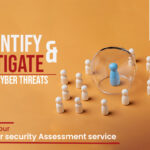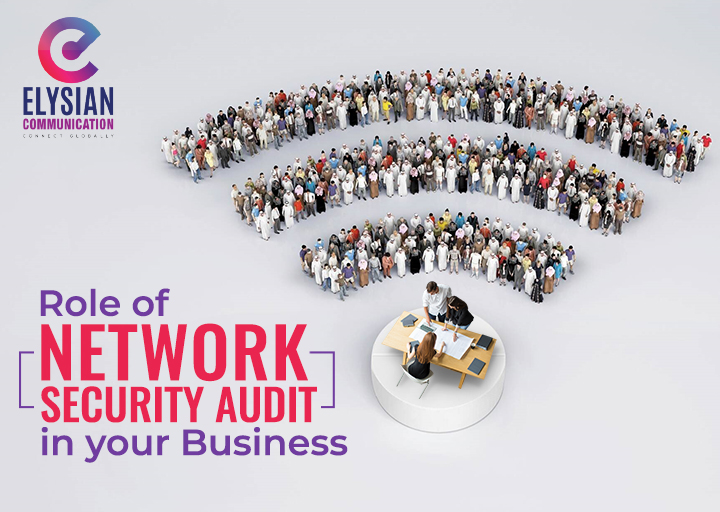Network Security Audit service
The first thing that comes to mind when you hear the word ‘audit’ is having an external team visit your company to assess the overall system and provide feedback. . you get it wrong Audits are essential to the smooth running of a company to find and fix problems before they seriously affect the system. Network security audits are no exception. It’s essential for identifying serious security issues so you can protect your business from such imminent threats.
Define a network security audit and find out why it’s important to your organization.
What is a network security audit? How does it work and what is the role of a network security audit service in your business?
To discover network vulnerabilities before they become problems and expose customers to malicious attacks, MSSPs carefully review their customers’ IT and cybersecurity policies and key assets. A network security audit assesses internal and external security threats to a network by thoroughly evaluating the entire system, including physical equipment, system hardware, software, applications and programs. During this process, potential threats are identified and documented in reports to find the root cause of problems and suggest solutions for all insecure parts of your network.
Network Security Audit process
Device and Platform Identification
Your network security audit service begins with this as the first step. Here, the MSSP carefully scans all assets on the network to discover and enumerate them.
It also shows the operating system currently in use. The framework for the rest of the process is established at this critical step. This accurately identifies all potential security threats and breaches.
Security Policy Evaluation
Most organizations with a clear approach to IT and security adhere to security rules and practices to protect their critical assets. In this step, the MSSP evaluates the organization’s security policies and processes to determine whether they meet the global security standards required to adequately protect technology and information assets from threats. For example, access control policies should ensure authorized user access and protect systems and services from unauthorized access.
MSSPs evaluate who has access to what and if that level of access is required.
Security Architecture Analysis
The network security audit service process moves into this phase. The MSSP then looks at how controls and technologies are physically implemented in the system and how the rules are actually applied. A thorough understanding of the device and platform identification process is critical to a thorough assessment of current cybersecurity protections and measures in place in your organization.
Risk Assessment
In practice, this step is part of the overall risk prevention and management process, identifying threats and vulnerabilities and quantifying the associated risks.
Based on the results of the risk assessment, we determine the risk management area according to the risk level and formulate a risk response plan for further countermeasures. Control objectives and procedures are developed for each identified risk, and their implementation is prioritized from the most serious threats to the easiest to remediate. Implementation is carried out according to plans and schedules.
Check Firewall Configuration
All external threats entering your organization must pass through your network firewall. This is probably one of your most important tasks. For this reason, all MSSPs thoroughly examine and evaluate the effectiveness of their organization’s firewalls.
Begin by examining your firewall topology and proceed to rule-based analysis to examine existing management policies and procedures and firewall configurations. To protect your system from external attacks, you should ensure that your firewall is up-to-date and has all the latest updates installed.
Penetration Testing
Penetration testing, or commonly known as penetration testing, is a security exercise that stresses a network’s security architecture. This is where her MSSP or cybersecurity expert hired by the organization attempts to compromise her security architecture in order to discover and exploit system vulnerabilities. The main purpose of this type of simulated attack is to find weaknesses in the system’s defenses and fix problems that have not yet been discovered.
Why Network Security Audits Are Important
Network security audit service are important because they help organizations identify threats and security vulnerabilities and develop plans to address them and defend against attackers. We do not recommend ignoring the security and productivity of your corporate network or leaving it to chance. Regular security audits are necessary to get the most out of your network systems and to detect and diagnose security problems. Such audits should be conducted at least once a year by all companies, large and small.
Network Security Audit Benefits
Helps you find threats to your system.
Ensure the security of critical information.
Identify hardware problems.
We need to improve our rules and procedures for vulnerable businesses.
Identify network inefficiencies.
Security benefits aside, audits help you make smart business decisions.
Regular inspections can help you learn about better software solutions and savings opportunities.
One-Time Audits
This service includes security audits that are performed periodically or in unusual circumstances that require high security alerts. Additionally, organizations can conduct one-time network security assessments when new risks are introduced.
Tollgate Audit
Binary results are these security audits. Define and implement new procedures within your organization.
Elysian Communication identifies risks that are preventing you from taking the next step.
Portfolio Audit
Depending on the company’s needs, these audit reports are treated as annual or semi-annual reports. That’s why Elysian Communication offers the most efficient audit schedule for validating your security practices.
Automated Audits
These audits utilize computers as part of the audit process. Software or detailed processes for producing audit reports that meet internal and external requirements are available from Elysian Communication.
It also has security threshold monitoring and alerting capabilities.
Conclusion
A network security audit service is an opportunity to assess risks associated with an organization’s operating systems, applications, and security practices. Organizations that do not conduct annual audits are exposed to significant security risks that may expose sensitive information. Additionally, conducting security audits and regularly reviewing organizational rules and regulations can help avoid future vulnerabilities and data loss.
Elysian Communication network security team examines all IT infrastructure to gain insight into business efficiency and effectiveness.
Additionally, detailed reports are available to help you understand the performance of your network system. Plus, as soon as potential risk factors are identified, your support staff will immediately notify you, making it easier to pinpoint the source of the problem. We automate every area of your business and understand it deeply. In addition, we provide top-notch network security reports and ensure access to mitigate network security threats.





